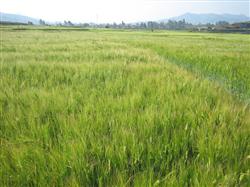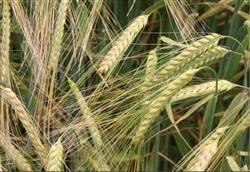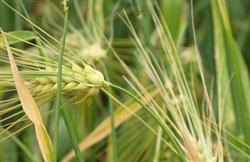Eight factors of High quality production of Malting Barley

Yancheng area of Jiangsu Province is an important producing area of malting barley in China, which accounts for about 15% of the total output of malting barley in China, but its yield and quality are often affected by climatic conditions. This paper analyzes the main factors affecting the high quality production of malting barley and the countermeasures that should be taken. First, soil: the first is to do a good job in the capital construction of irrigation and water conservancy, ensuring the matching of ditches, canals, roads, and forests to form a relatively perfect agricultural ecosystem; the second is to adhere to the full return of crop straw to the field, improve the soil structure, and increase the content of soil organic matter; third, in the fields with heavy salinity, the farming system of flood-drought rotation should be adopted. 2. Varieties: high-yield and high-quality varieties are the first guarantee to improve efficiency. At present, the appearance and internal quality of malting barley varieties in production need to be further improved, which requires breeding units to increase investment in this respect and breed malting barley varieties with stronger adaptability and better quality. 3. Sowing date: the best sowing date of malting barley in this area is from October 25 to November 5, and barley seeds are soaked in live water before sowing; under the premise of soil moisture, rotary tillage is used to sow seeds directly, which not only sows 2-3 days earlier, but also saves the sowing cost. 4. Basic seedlings: the basic seedlings of malting barley in the suitable sowing date should be about 2.25 million / ha, those sown early should be reduced by 10-15%, and those sown late can increase the amount of seeds and reduce the row spacing, so as to improve the basic seedlings and ensure sufficient ears. For example, the yield of Su Bei 3 is between 6375 and 7125 kg / ha, and the dynamics of basic seedlings and tillers with 1000-grain weight of more than 42 grams are as follows: basic seedlings 225-2.55 million / ha, seedlings at the beginning of overwintering 810-8.55 million / ha, peak seedlings 1800-19.5 million / ha are about 2 times of the expected number of panicles. 5. Fertilizer operation: according to the law and characteristics of barley production and development, fertilizer operation should grasp the principle of "pre-weight, middle control and post-supplement": basal fertilizer should be fully applied, tillering fertilizer should be applied early, and jointing and booting fertilizer should be applied at the remainder of leaf age. Otherwise, the grain protein content is significantly increased, which is not conducive to high quality, but also increases the risk of lodging. The proportion of base topdressing fertilizer, nitrogen base fertilizer, strong tiller fertilizer, jointing booting fertilizer, phosphorus and potassium fertilizer and jointing booting fertilizer accounted for 60-65%, 20-25%, 15-20%, 75% and 25%, respectively. 6. Moisture: it is required to establish a high-standard field ditch network, and the three ditches of border surface ditch, Hengyao ditch and drainage ditch are connected with each other, and the vertical ditch on the border surface is 3.6 meters per strip, with a depth of more than 20 centimeters, and a depth of 50 meters per strip, with a depth of more than 30 centimeters. Ensure the vigorous vitality of the root system of malting barley. 7. Pesticides: pesticides with high efficiency, low toxicity and low residues should be selected, organophosphorus pesticides should be avoided, and biological pesticides should be actively used. During the peak period of disease control and pest control of malting barley, powdery mildew, scab and aphids should be controlled in time, and the use of high toxic and residual pesticides should be prohibited within one month before harvest. Harvest time: timely harvest can improve the yield and brewing quality of malting barley, and it is appropriate to harvest when the grain is in full maturity. It is necessary to spread the sun in time after harvest, so that when the grain water content is less than 13%, it can be safely stored in the storage, maintain a high germination rate and improve the processing quality.
- Prev

Brewing barley planting technology
Malting barley is the special barley for brewing beer. Beer is rich in nutrition, known as "liquid bread", the market demand is large. There are many barley varieties used for brewing at home and abroad, mainly Zaoshu 3, Aizao 3, Humai 4, Zhoumai 1, Zhepi 1, Yan75 -21, Mengke, Ante, Si Si system, etc.
- Next

Technology of reducing Ice and Snow disaster in Barley
At present, the field growth of barley has entered a critical stage. To ensure the high and stable yield of barley, it is particularly important to strengthen the field management in the middle and later stage, and the following cultivation and management measures should be taken. Scientific and economic water use. Barley was selected to be irrigated once from booting to heading and from filling to milking stage.
Related
- The first cup of black tea in spring, the flavor and history of tea gardens in Kenya, Africa
- The computer can not only choose potatoes, but also grow tea rice. AI will grow winter oolong tea champion.
- It is not only the inflated tea bitten by insects, but also engraved with the four seasons tea in Beipu.
- The Oriental Beauty Tea Festival in Zhuxian County takes the stage at the weekend to experience the plus-size feast of oil tea.
- & quot; Oriental Beauty Tea & Exploration of Emei in Hsinchu, the hometown of quot;
- The new variety of strawberry "Tainong 1" dessert is the first choice with mellow aroma. Crimson gorgeous
- History of Tea in Taiwan: from Wild Inner Mountain to Export Tea Garden
- Two types of Taiwan Oriental Beauty Black Tea won the British three-Star Award for Childhood Tea Xiang Zhang Jiaqi changed from pilot to champion tea maker.
- Banana species and varieties: the planting history of Taiwan Xianren banana and dwarf banana is long, is banana disease resistant?
- Coffee planting Technology: Qianjie Coffee from Seedling to harvesting

